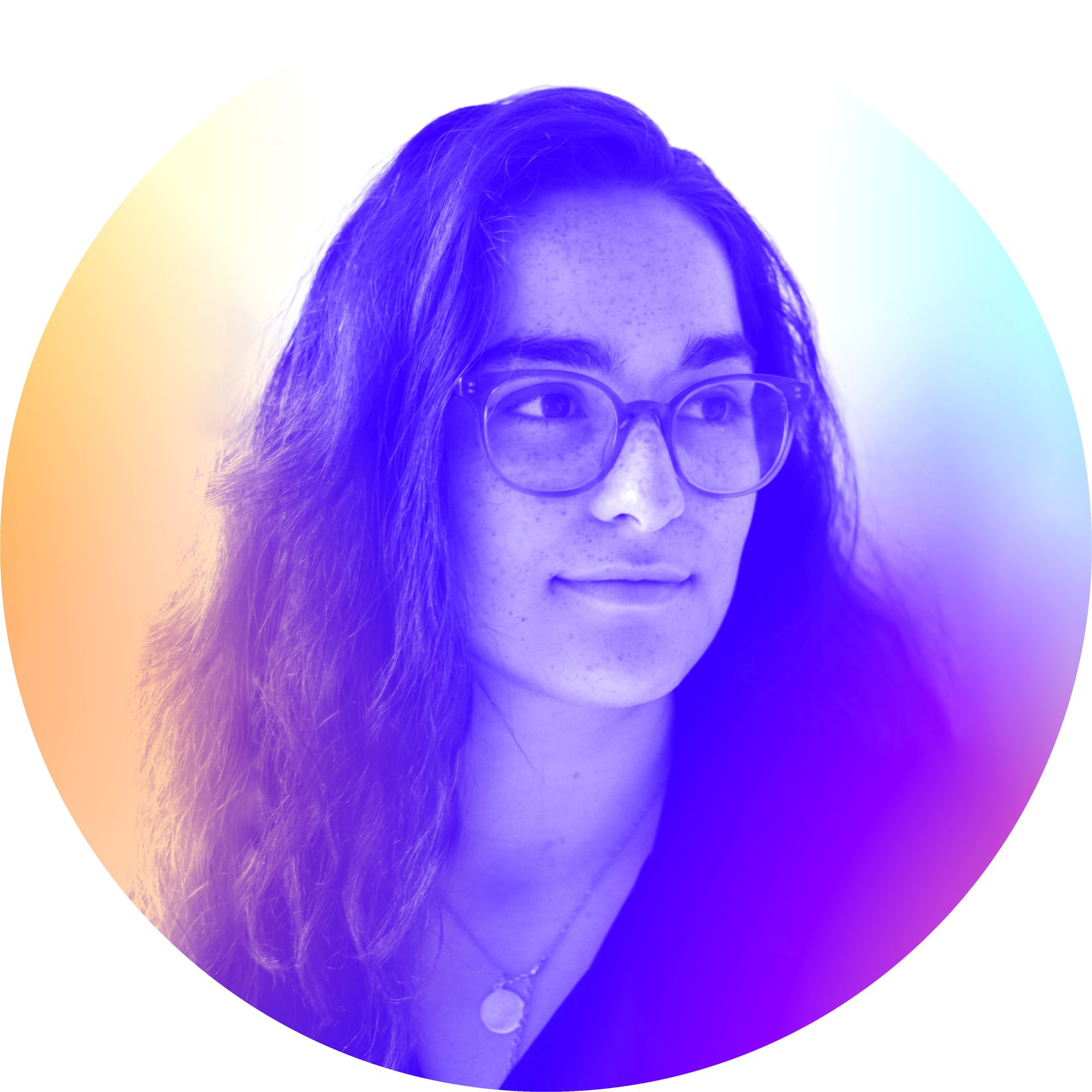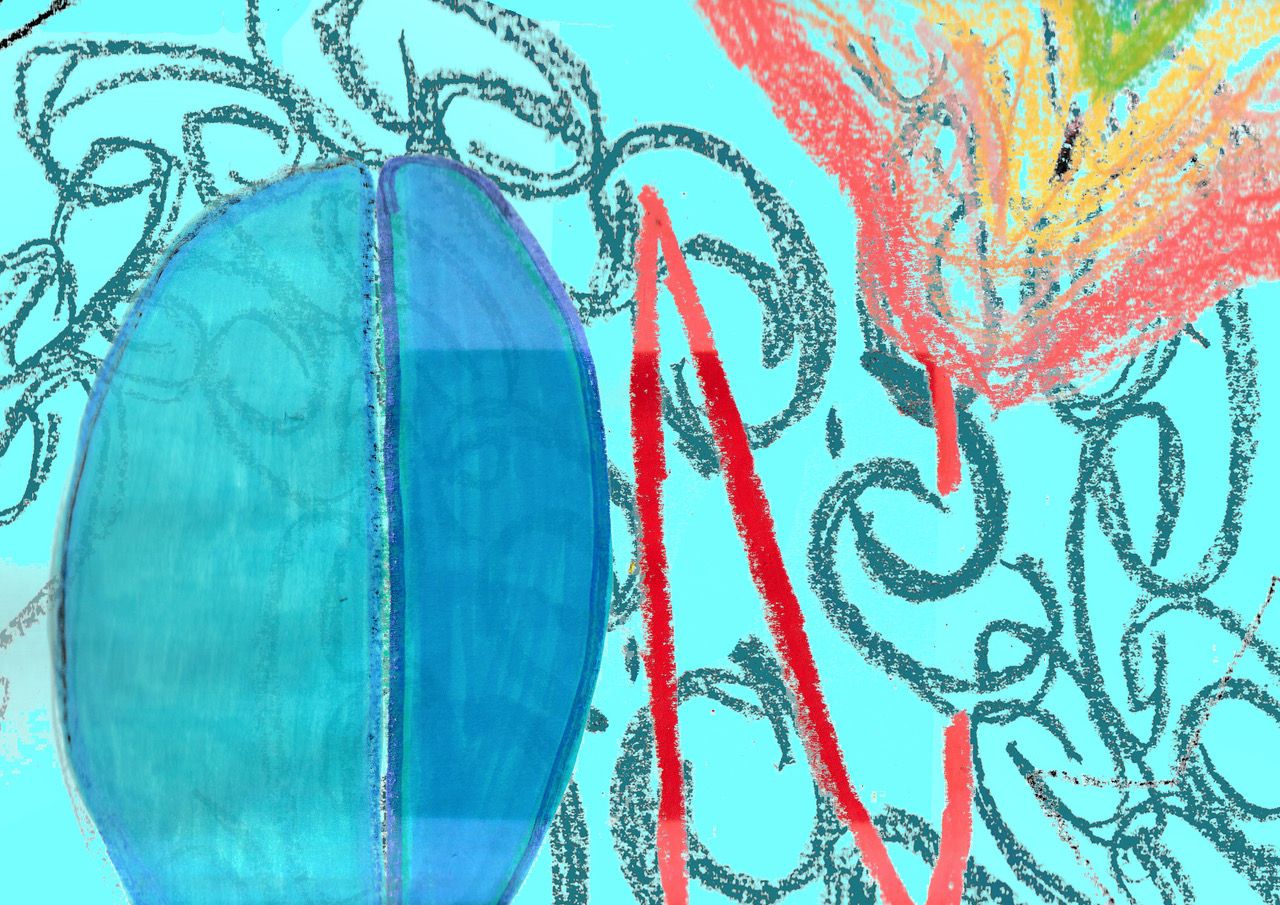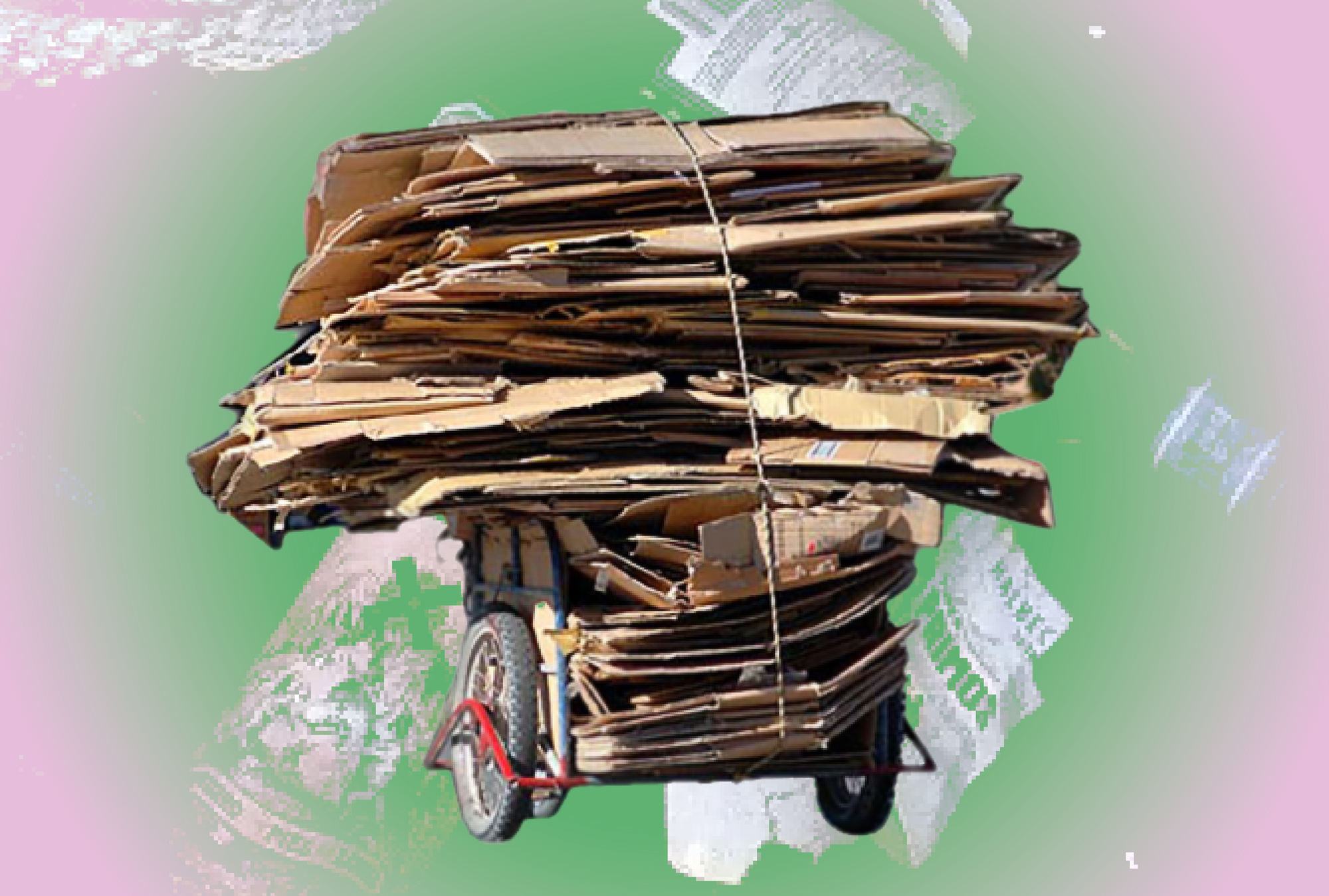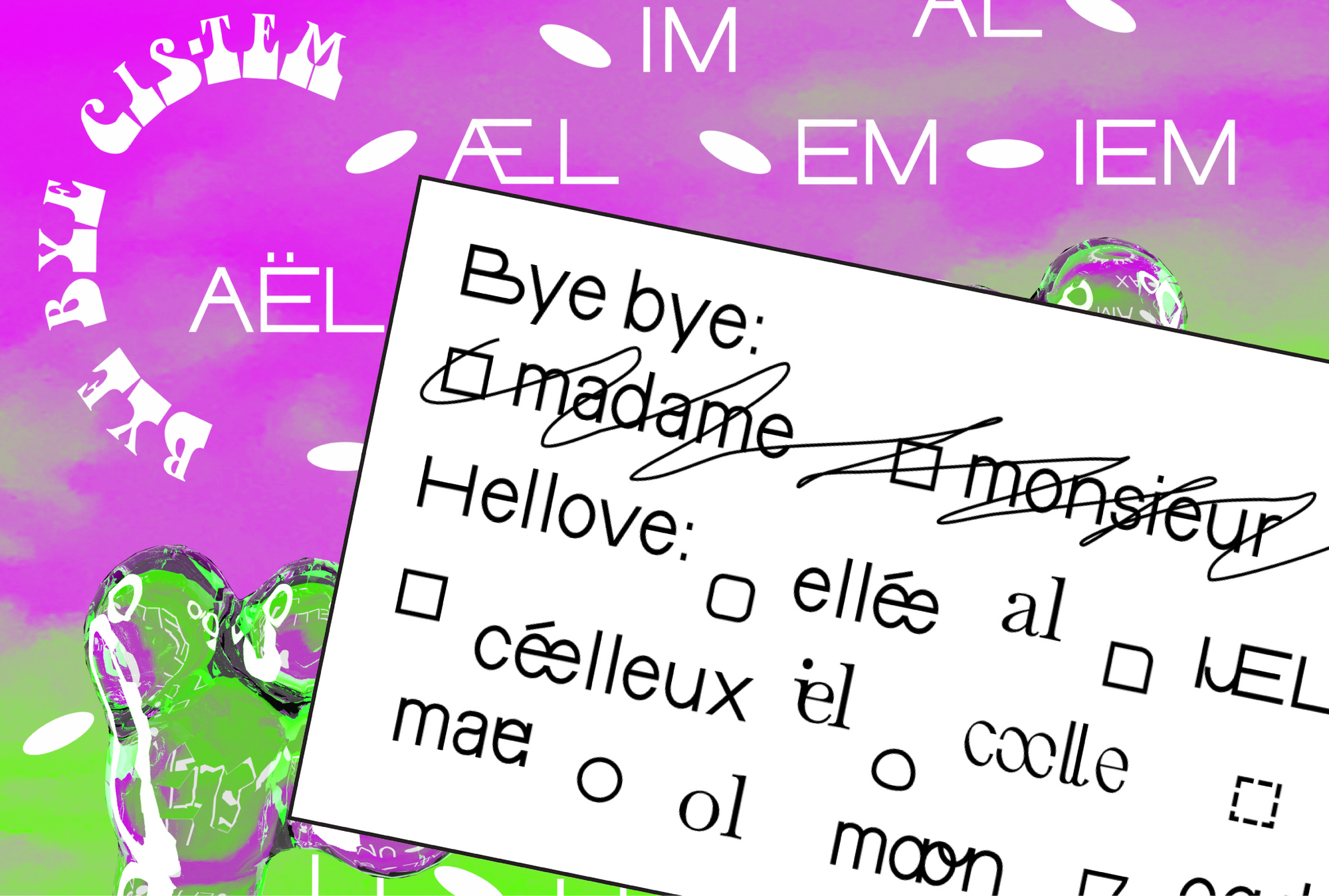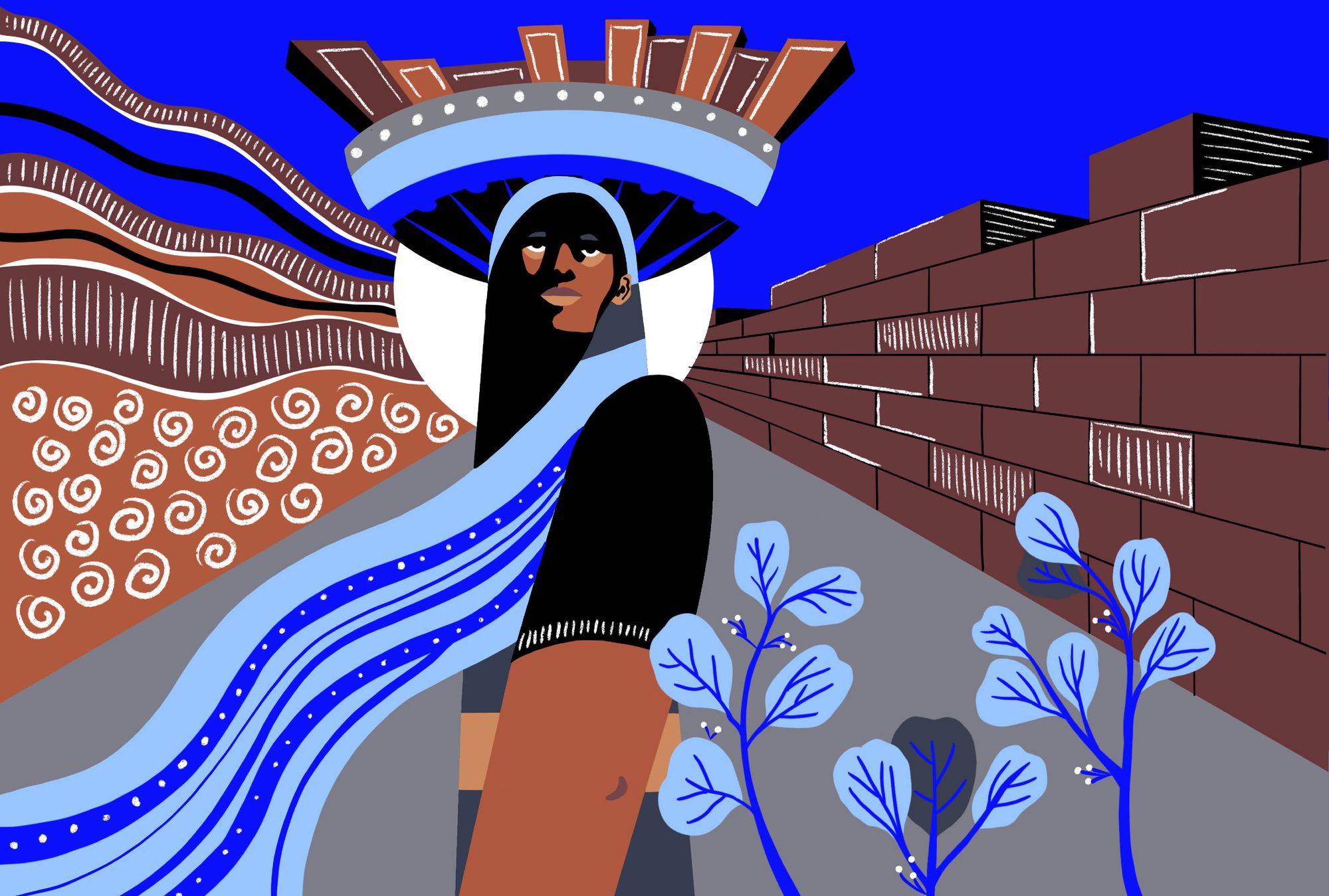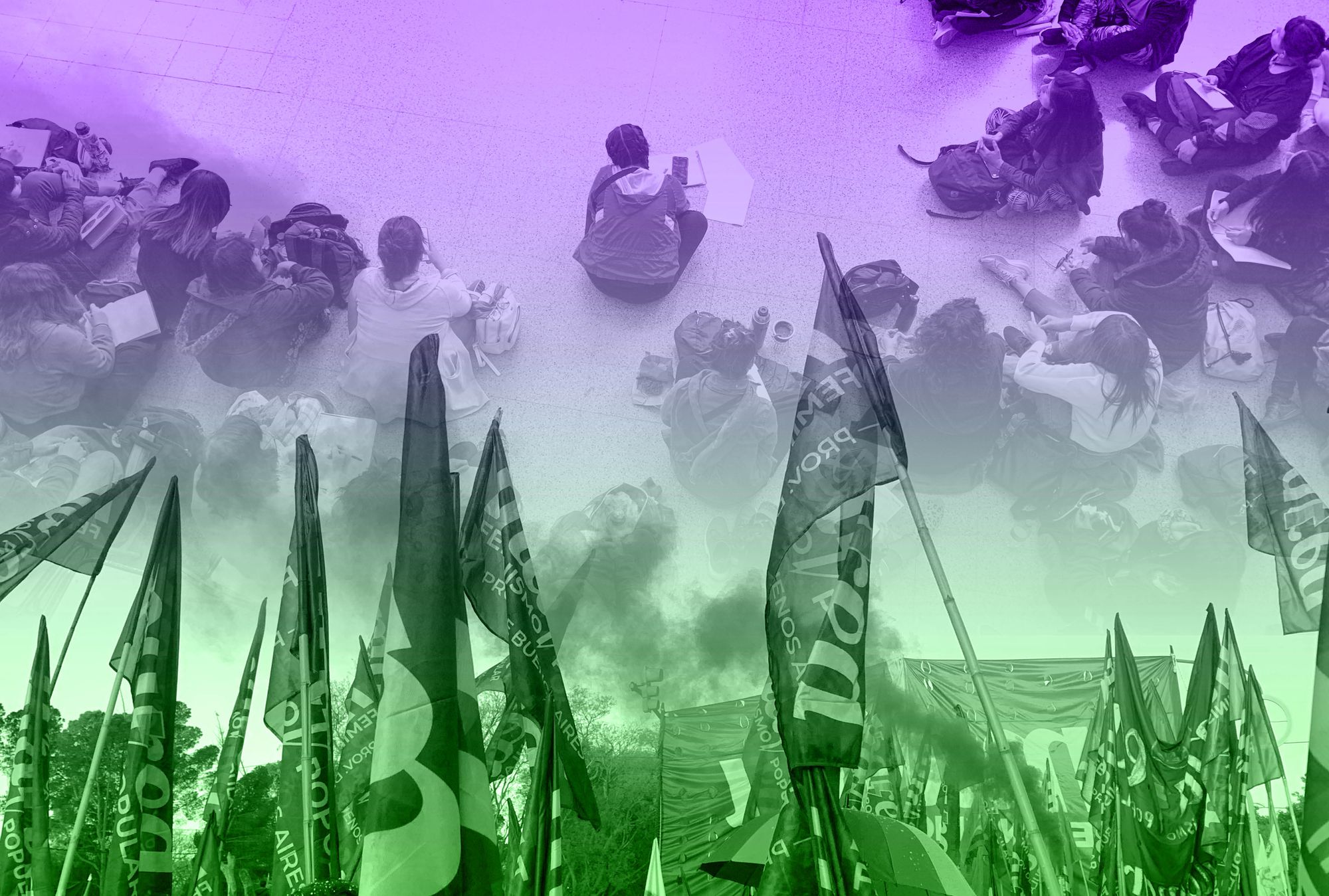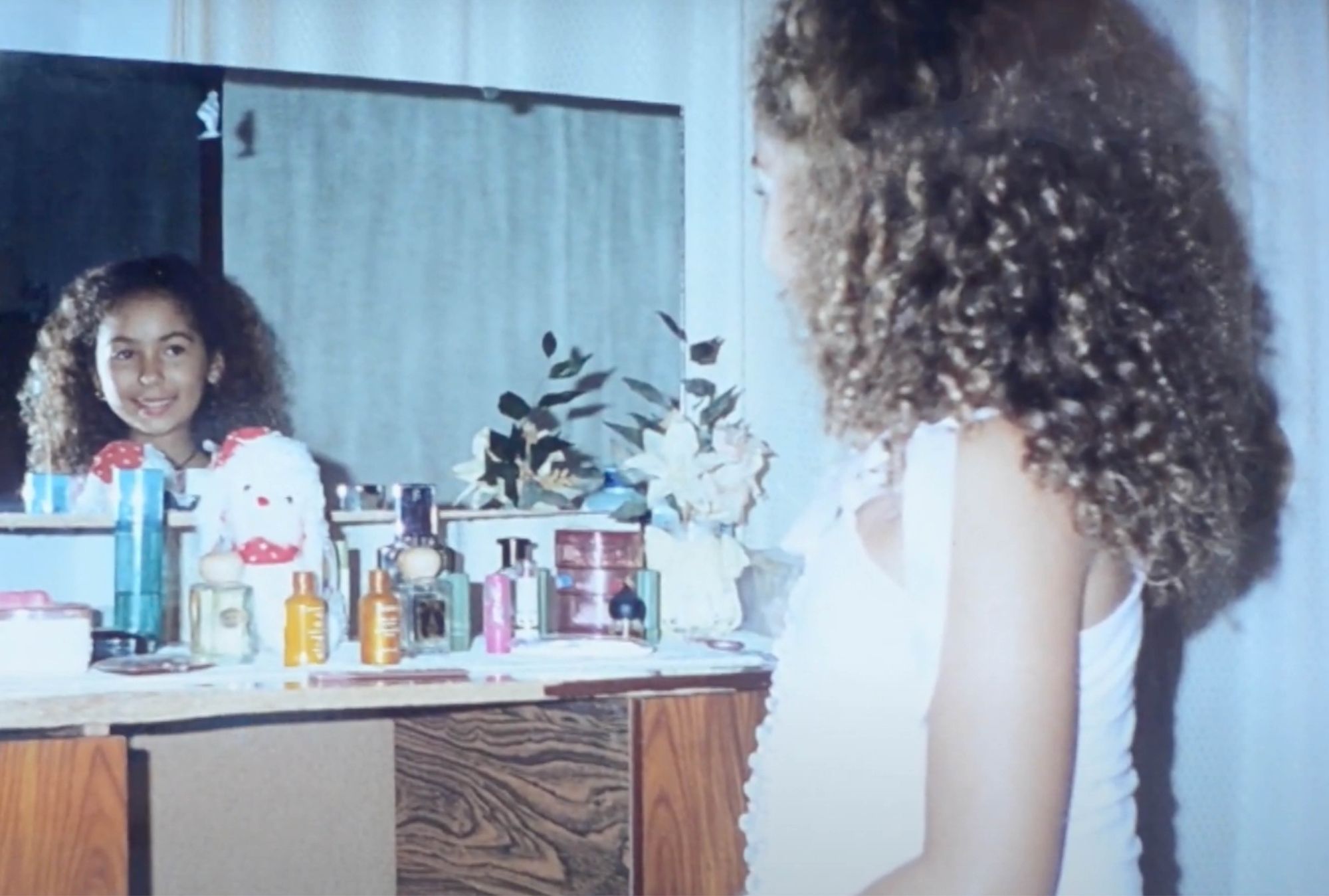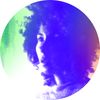
Swedish media regularly portrays refugees as nothing but faceless, unnamed, suffering victims drowning in some ocean. This portrayal, far from being exclusive to this country, dehumanizes refugees. The refugee “problem” is regularly discussed as one of “crisis”: Swedish newspapers speak of the “global refugee crisis,’’ the “European migrant crisis,” or “an integration crisis.’’ This terminology sparks feelings of fear, apathy, and hate, which become politicized and then socialized. In result, refugees are not seen as real people, they have no story beyond their “refugee story,’’ and most importantly, they have no voice, no identity, and no rights.
“The refugee ‘problem’ is regularly discussed as one of ‘crisis.’ This terminology sparks feelings of fear, apathy, and hate, which become politicized and then socialized.”
I have regularly witnessed this dehumanization, myself having arrived in Sweden as refugee in 2009. Before coming to the country, I believed the beautiful things I had heard about Sweden—its generous human rights, its respect towards children and women. Soon enough though, I was faced with something altogether different. I realized that this nation that claims to be democratic—a place for all its citizens—was selling a fantasy. For many others like myself, Sweden is a strictly enclosed and restrictive place.
I went to middle school in the small town of Bromölla, in the Northeast of the country, where I experienced a lot of racism from teachers, students, and school staff. Once, in seventh grade, we had a class about the Middle East, and suddenly, for no reason, my teacher had the urge to clarify that “not all Arabs are terrorists.” I was the only Arab in the room, and the teacher said to my classmates: “Do you think that Hayfaa would bomb this classroom? Of course not.” In saying that, he was feeding racist thoughts and stereotypes.
At school, I was forbidden to speak Arabic, given the excuse that people around me would not understand what I said and assume that I might be speaking badly about them. Being unable to speak Swedish back then meant I kept quiet. Without any means of self-expression, I was perceived as the other without a voice. In hindsight, the kids in Bromölla had absolutely no experience of diversity. They had already been exposed to racist beliefs through school, beliefs which were reinforced by political discourse. Just for context, in 2019, 35.8% of Bromölla voted for the Sweden Democrats (SD), a right-wing party party with roots in the neo-Nazi movements of the 90s.

Around 2014, I received a deportation notice. The migration officer informed me of the deportation process while constantly applying moisturiser to his lips. As my whole life was about to fall apart, the institution was showing nothing but apathy. At that point, Sweden had shifted its discourse to an “integration crisis”—they didn’t want any more refugees entering their country. The SD had become the second largest party in Sweden and the government started applying new restrictions to its borders with Denmark. The number of refugees entering the country dropped and as soon as that happened, the SD also lost power. Is Swedish society willing to vote for neo-Nazis just because they don’t want more refugees entering the country? If so, that’s scary. Very scary.
“I have always struggled with the sense of entitlement that it takes to create such narratives of invisibility and misrepresentation. Where are the stories that I need to hear, the stories where I see a possibility for myself in the end?”
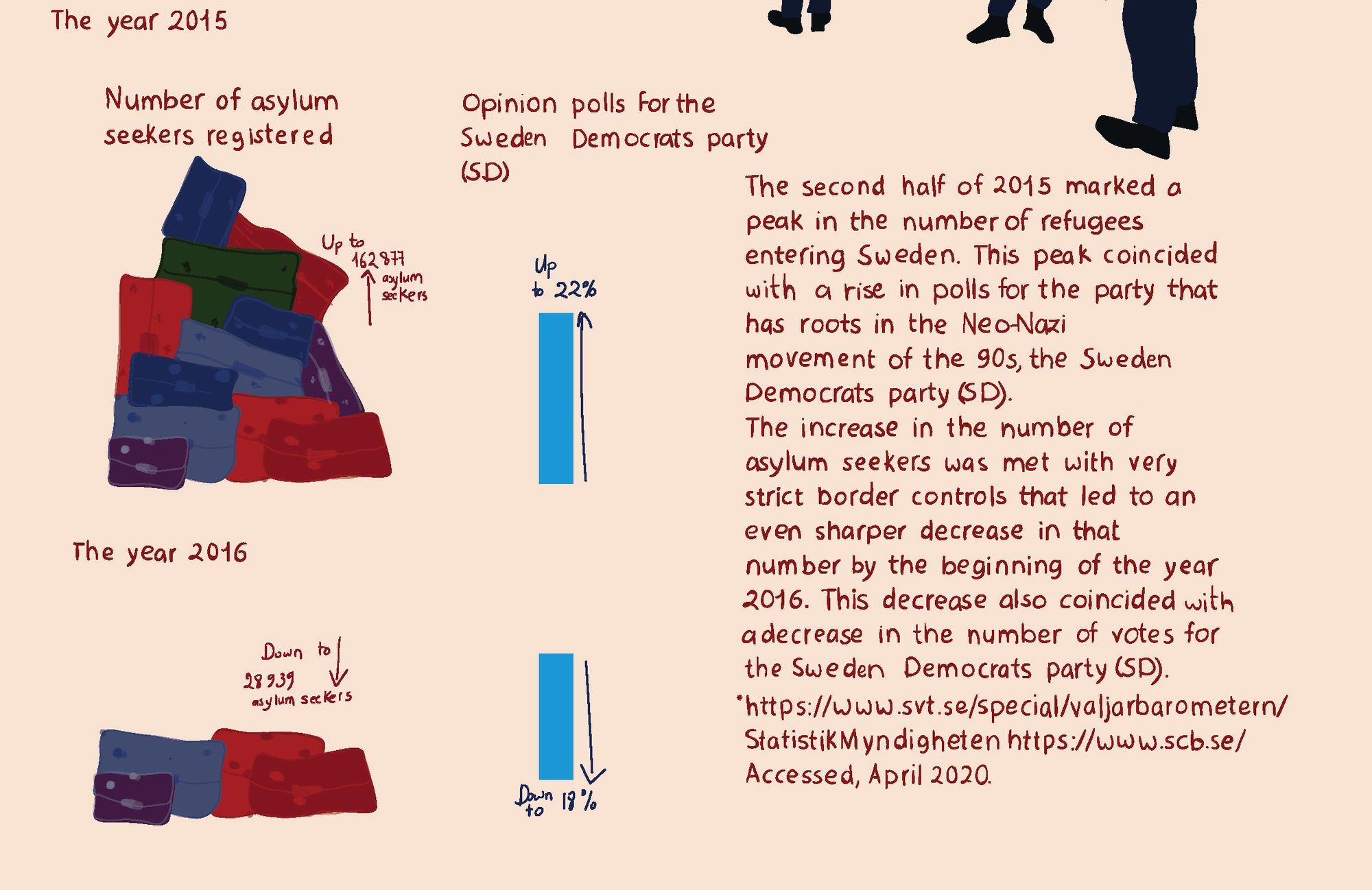
In 2011, the same Migration Board had commissioned the creators of the popular Swedish comic Bamse to depict child deportation—a decision in and of itself problematic. The result shows a group of child raccoons being greeted and hugged at the airport by their relatives. “Welcome home” says the text in Swedish. “It has been empty and boring without you.” The comic strip is supposed to address the anxiety of deportation as merely an irrational one, since there’s a “happy ending” to the process. This is just bullshit! The Iraq war alone left its people with nearly one million orphans; most of the refugee kids don’t have any family members left back home. So who is the comic really made for? Where are the stories that I need to hear, the stories where I see a possibility for myself in the end?
I have always struggled with the sense of entitlement that it takes to create such narratives of invisibility and misrepresentation. In 2019, I started an MA at the Konstfack in Stockholm. My original plan was to continue what I had started during my BA degree, that is, researching Western representation of Arab women in areas of conflict, and focusing particularly on Raqaa, the city controlled by ISIL between 2014 and 2017. However, everything changed when I had to apply for Swedish nationality.
At that point I had already been living for 10 years in Sweden, and I finally qualified for citizenship. The application alone took me two months, and drove me to complete mental and emotional exhaustion. It took an excruciatingly long time to book a timeslot, but I eventually returned to the same Migration Board. The receptionist greeted me with reproach: “Well, if you refugees didn’t bring your families and the families of your families, we wouldn’t have ended up with a refugee crisis of one million refugees and we would have enough time slots for everyone.” As he blamed me personally for exceeding the planned refugee intake of Sweden, I paid attention to the design of the office that allowed him to speak to me in such a way.
“A friend suggested that I draw this experience to take control over the narrative. ‘You decide where it starts. You decide where it ends,’ he said. This is how my role as an illustrator came to the fore.”
The room was full of cameras, all of them watching me. There were signs around the room forbidding me from documenting what happens inside these walls. “Can I please ask you a question?” I said to the clerk. “No” he replied, “you have no right to ask questions right now.” The way he spoke to me is part of a broader power structure which seeks to silence and delegitimize my experience. Far from being just a mean clerk, this is a protected pattern of structural apathy and racism. I left feeling shattered. Then, a friend, who has a background in psychology, suggested that I draw this experience to take control over the narrative. “You decide where it starts. You decide where it ends,” he said. This is how my role as an illustrator came to the fore.
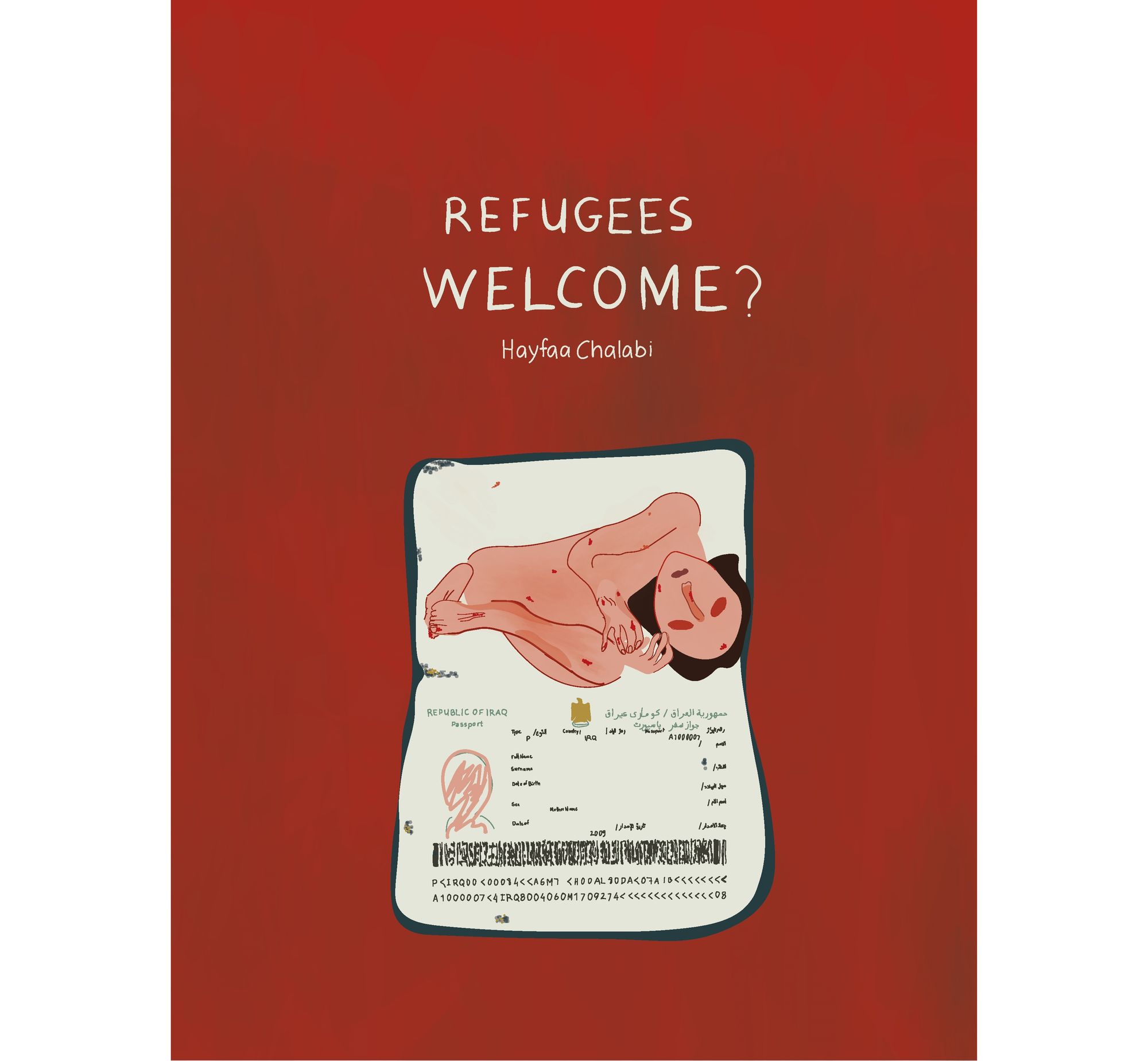
My graphic novel Refugees Welcome?, which I developed during my MA, starts from that very incident at the Migration Board, and I did so as an act of resistance. I wanted to use the tools of illustrative storytelling to challenge governmental policies that block refugees from representing their own narratives.
“I wanted to claim the right of refugees to tell our own stories, while also documenting and exposing a system that has been shaped by our oppressors.”
The book narrates two parallel stories: The first, my own experience as an asylum seeker, and the second, a compilation of several other refugee situations in Sweden. The first is treated from a personal perspective, and the second journalistically. Through this approach, I sought to not only to illustrate a narrative but also educate, interpret, and re-contextualize. I wanted to claim the right of refugees to tell our own stories, while also documenting and exposing a system that has been shaped by our oppressors.
It was particularly important to include examples of the devastating consequences of the policies implemented by the Migration Board. For example, I included the story of an Iraqi man who died from a heart attack on his deportation flight to Iraq before he could arrive at a future his mind and body could not bear. His last words were: ‘‘I have no life there. No home, no family, nothing. My future is here.” I also included the story of Khaled Khodidi, who, around the same year that the Bamse’s comic was published, was forced to say goodbye to the members of his family in Helsingborg. Shortly after arriving in Iraq, Khodidi was brutally murdered by decapitation, leaving his six-year-old son orphaned. Another horror story in the book is that of 13-year-old Abdullah and his family, who, after being deported from Sweden, sought asylum in Italy and were forced to sleep rough. After falling off from his wheelchair and receiving no medical assistance, Abdullah tragically died in the streets of Bolzano.
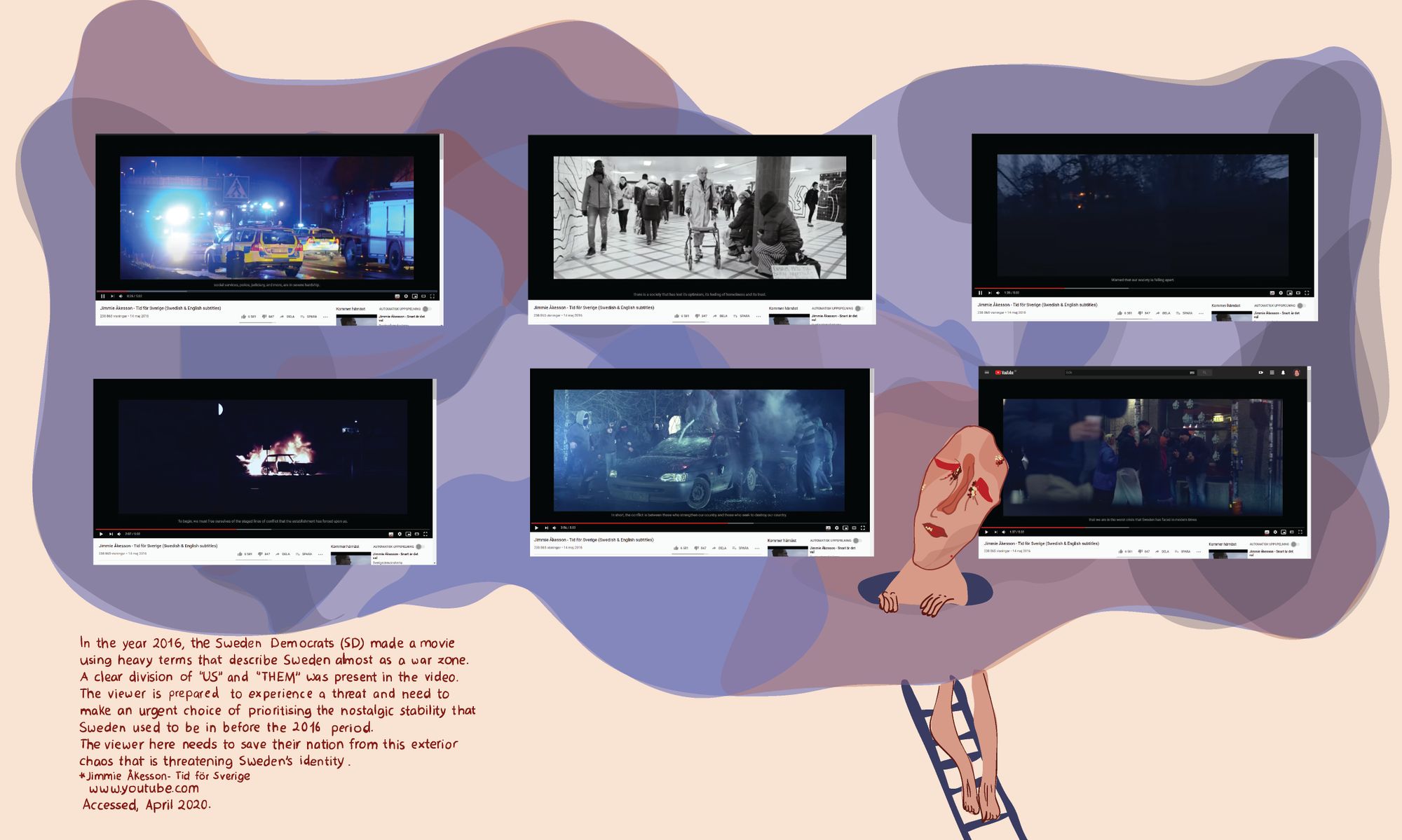
The book also criticizes the role of the SD, in particular their campaigns from the last years. This series of videos depict Sweden as “a war zone” being attacked by refugees who want to destroy the nation with their supposedly less civilized identities. An illustration from my novel places screenshots from the party’s videos in a dark cloud of fear and irrationality, which is commentary on the warped reality that the party seeks to create. I feel—and want the reader to feel—that this bubble is not realistic; the dark depiction the party creates is far beyond what is actually happening on Swedish grounds. I used a ladder in the illustration to add even more irony to the piece.
When it came to depicting myself and my feelings in the graphic novel, I did so by creating two figures: a more realistic one and a symbolic one, representing my own self going through the dehumanization process. This symbolic, dehumanized figure is made only of flesh, blood, and sorrow. In contrast, the realistic figure highlights my identity in a more full, complex, detailed way; she has hair, clothes, and is a person with companions and joy. My dehumanized figure has an elongated head and carries the physical effects of misrepresentation and exclusion on her shoulders. A headache is most of what I can remember from my encounters at the Migration Board, one that made my head feel heavy, long, and drawn out. I also experienced anxiety from the asylum process that provoked stomach pain, insomnia, weakness, and fatigue, which made me feel pale, exposed, and weak.
“When certain bodies fear, they shrink to avoid the threat that creates the fear in the first place. This shrinkage is significant as it causes certain bodies to take less space in society.”
Sara Ahmed’s writings helped me understand the political consequences of emotions such as fear. In her 2004 book The Cultural Politics of Emotion, Ahmed explains how, when certain bodies fear, they shrink to avoid the threat that creates the fear in the first place. This shrinkage is significant as it causes certain bodies to take less space in society. Franz Fanon describes a similar process in Black Skin, White Masks: In a train, a Black man sits facing a white boy. The white boy fears the Black man and starts to cry. The Black man fears the white boy’s reaction and starts to sweat. The white boy thinks the Black man’s fear is rage, which makes him scream. The Black man fears in silence, his body sweats, he shrinks, while the child extends their body and takes more space. This is similar to the relationship between the refugee and the nationalist. I drew on these feelings and reactions to portray the figures of my graphic novel.
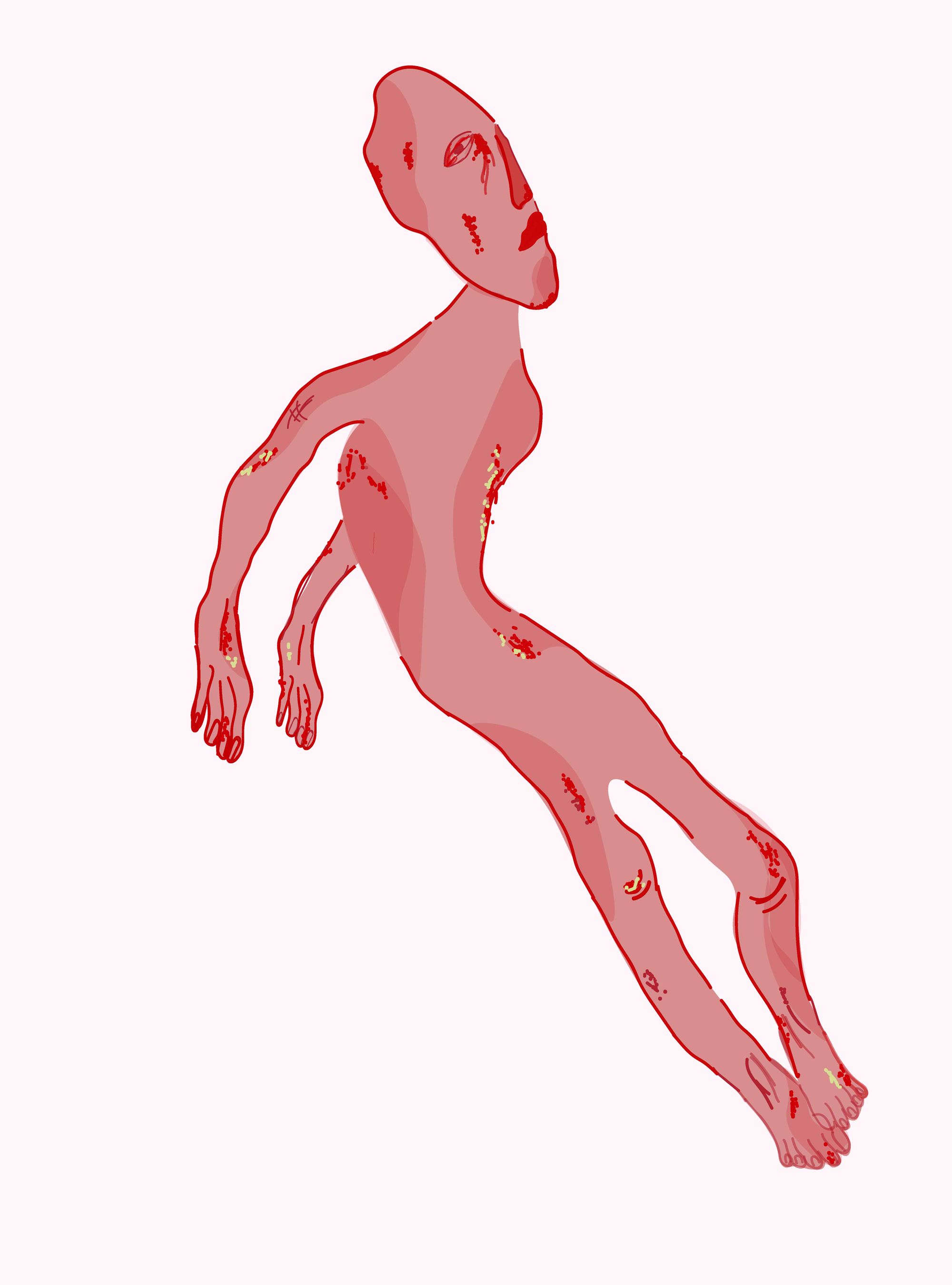
The challenge of telling other people’s stories emerged most clearly when I decided to visit the waiting facility for refugees where, years ago, I had stayed as a child. I wanted to see if it was still the way I remembered it. As I arrived, I immediately felt an urge to leave. Walking towards the door, I then noticed a Gambian woman sitting in the kitchen, and I just couldn’t escape her eyes: she looked both extremely strong and sad at the same time. I tried to have a conversation with her, but I felt awful about exposing her vulnerability, weakness, and sadness. As I was leaving, I had the urge and asked: “Do you need any help?” As soon as I said it though, I realized I couldn’t offer any help, which made me feel shame and guilt. Returning to this place made me confront my own position of privilege. Even though I am still a refugee, I now occupy a different place within society’s power structures.
“How might illustration portray the refugee as a person who experiences oppressive patterns, but also exists as an individual with their own life, story, family, happiness, and—most importantly—dignity?”
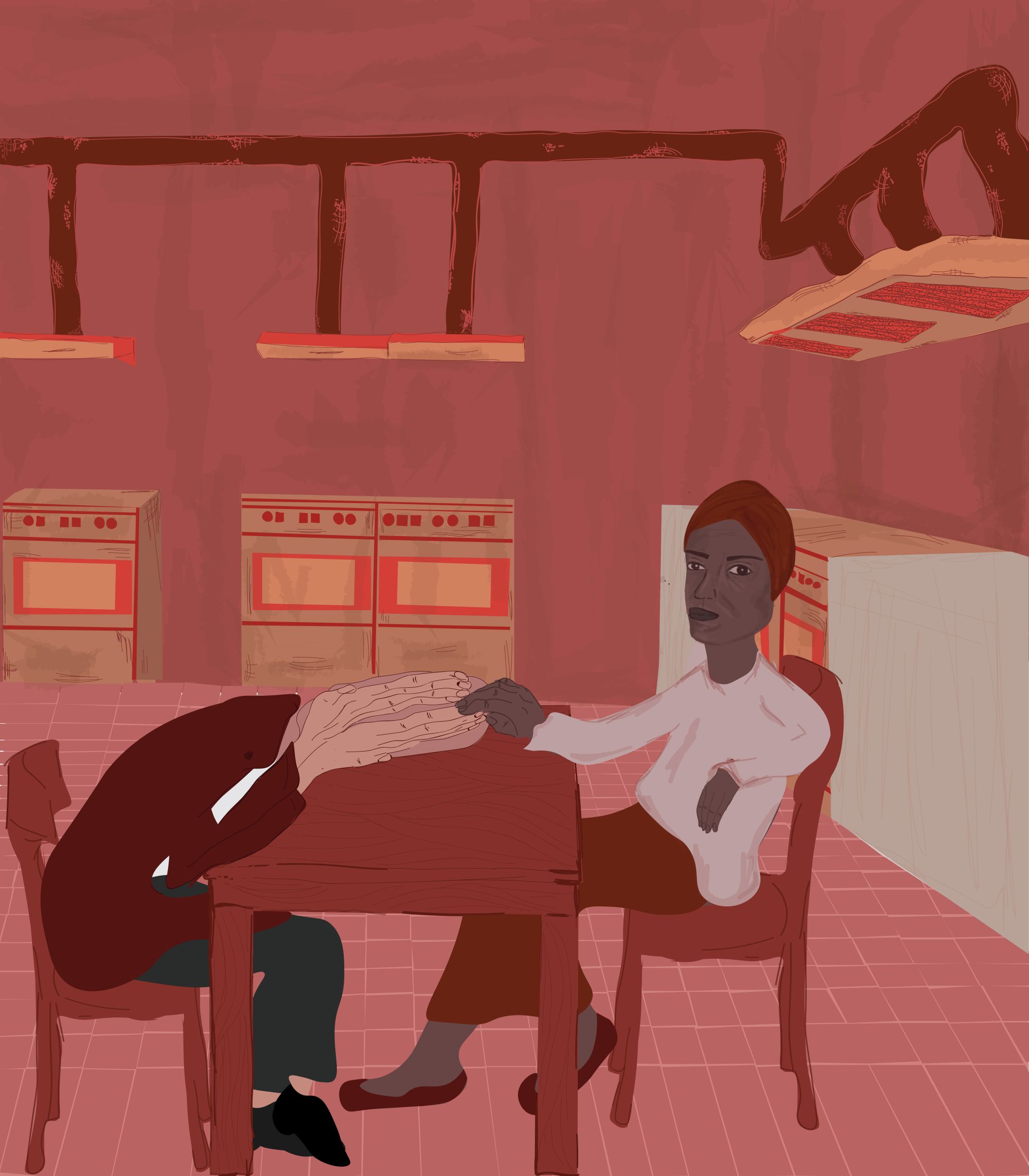
My visit to the waiting facility was unnecessary, and when I tried to illustrate it, I felt like I was reproducing the same stereotypes I was trying to break. I am an Iraqi refugee who sought asylum at age 13, this is my singular individual experience, which cannot account for all the many multifaceted experiences of refugees in Sweden.
I learned that a self-aware project is one that makes room for reflection and self-criticism. And as a result of this learning, I wanted to question the viewer’s relationship to my illustrations, and consider what power structures are created in my own work. I asked myself: How can I, as an illustrator, explore visual portrayals that do not depict the refugee as entirely open and easily accessible to the reader? How might illustration portray the refugee as a person who experiences oppressive patterns, but also exists as an individual with their own life, story, family, happiness, and—most importantly—dignity? How can a depiction of a victim be imbued with strength, a sense of strength that’s stronger than a reader who is not affected by the same oppressive patterns?
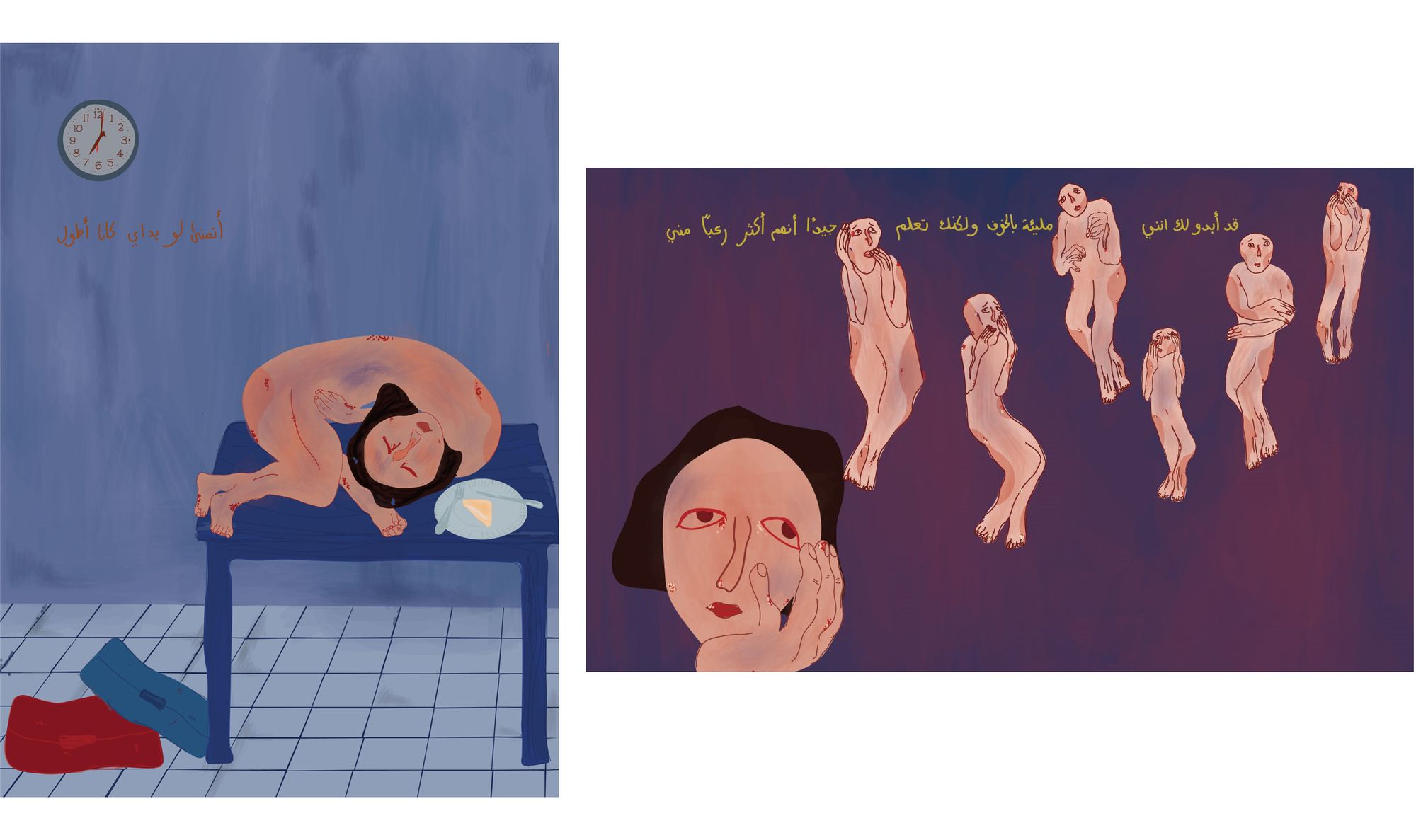
I chose to include my own experience at that hotel at age 13 in such a way as to avoid giving the reader full access to my being. To do so, I included a short and simple sentence in Arabic without translation. While the viewer looks at the character from above, I allow them to acknowledge their higher power structure of being outside the hotel. Presuming they don’t read Arabic, I remind them of their limitation to accessing my world. With that small but vital move, I also reminded myself of my own intent with this project: To create a careful positioning of the refugee in relation to the reader.
While I was working on Refugees Welcome, the chairman of the SD, Jimmie Åkesson, travelled to the Turkish borders to discourage immigrants from coming to Sweden; 6,292 refugees and asylum seekers died or went missing on their way toward an international destination; an estimation of thousands of refugees had been deported back to countries of conflict. Still today, many “illegal” and undocumented immigrants live in extremely challenging conditions in Sweden, seeking a future that is safer than war, and trying to live lives not battles.
I was often asked how I had the strength to explore such a personal and heavy topic. I could not have gone through this experience without the love and support of my family, teachers, and classmates. I must have filled an ocean with tears along the way, but I never doubted the necessity of an independent refugee narrative. Illustration allowed me to question Western media’s sense of entitlement, but it did much more than did. It allowed me to take back ownership of my story.
Hayfaa Chalabi (she/her), is an illustrator and storyteller interested in re-contextualizing histories and narratives and raising awareness about different socio-political issues. She has a BFA in Visual Communication+Change from Linnaeus University and an MFA in Visual Communication from Konstfack, both in Sweden. Her work revolves around the misuse of power structures in our society and the intersections of visual culture, gender, and migration. During her undergraduate studies, Chalabi has conducted the research “Your exotic, your victim, your terrorist—Visual storytelling to challenge the western stigma of Arab women in areas of conflict”. The study tackled Western representation of Arab Women in areas of conflict, focusing on the case of Raqqa in Syria during its total occupation by the Islamic State in 2014.

